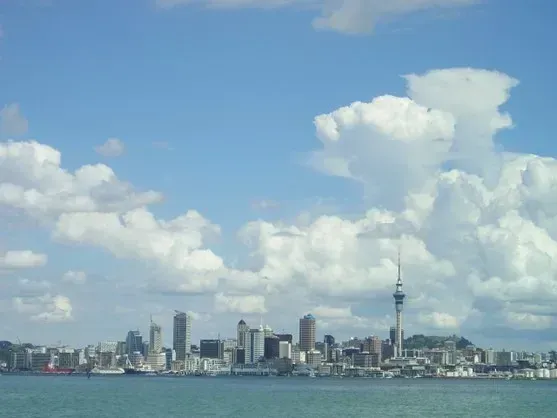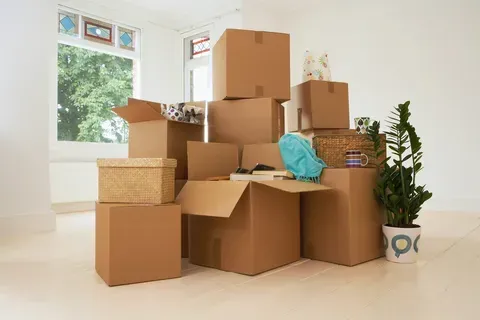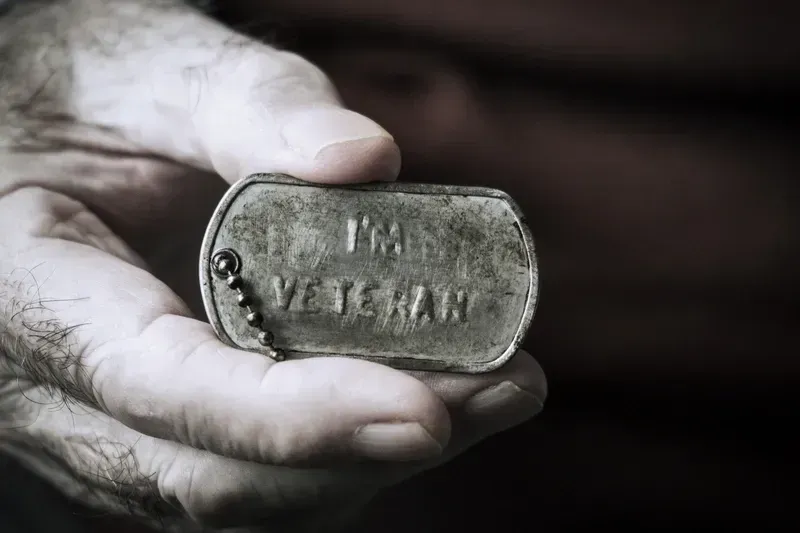NEED HELP?
CLAIM YOUR FREE QUOTE
We will get back to you as soon as possible.
Please try again later.
Five Things to Do to Prepare for a Long-Distance Move
CLAIM YOUR FREE QUOTE
Five Things to Do to Prepare for a Long-Distance Move

Are you planning a long-distance move and feeling overwhelmed by all the tasks that lie ahead? Well, fret not! In this article, we will share with you the top five things you need to do to prepare for a seamless and stress-free long-distance move. Moving to a new city or even a new country can be an exciting adventure, but it requires careful planning and organization to ensure a smooth transition. From decluttering and packing to researching your new neighborhood and hiring professional movers, we've got you covered. So, sit back, relax, and let us guide you through the essential steps that will make your long-distance move a breeze. Whether you're relocating for work, family, or simply seeking a fresh start, our expert tips will help you stay organized, minimize stress, and turn your moving experience into a memorable journey. Get ready to embark on an exciting new chapter in your life with confidence and ease.
Why prepare for a long-distance move?
Moving is a significant undertaking, and when it involves long distances, proper preparation becomes even more crucial. Planning ahead allows you to minimize stress, avoid last-minute chaos, and ensure that everything goes smoothly on the day of your move. By taking the time to prepare, you can streamline the process, save money, and have peace of mind knowing that you've covered all the necessary bases.
One of the primary reasons to prepare for a long-distance move is to ensure that you have enough time to research and familiarize yourself with your new location. Whether you're moving to a new city or a different country, understanding the area will help you adjust faster and make informed decisions. Additionally, preparing in advance allows you to create a detailed moving timeline, hire professional movers if needed, and take care of administrative tasks such as changing your address, transferring utilities, and notifying important parties about your move.
Preparing for a long-distance move also involves decluttering and organizing your belongings, which can be time-consuming but ultimately rewarding. Downsizing before your move not only reduces the amount of stuff you'll have to pack and transport but also helps you start fresh in your new home. By getting rid of unnecessary items, you'll have a more organized and stress-free moving experience.
In conclusion, preparing for a long-distance move is essential to ensure a smooth and hassle-free transition. It allows you to research your new location, create a moving timeline, hire professional movers if necessary, declutter and organize your belongings, and take care of administrative tasks. By following these steps, you'll be well-prepared to embark on your new adventure with confidence and ease.
Researching your new location
When planning a long-distance move, one of the most important steps is to research your new location thoroughly. Understanding the area, its neighborhoods, amenities, and local culture will help you make informed decisions and ease your transition. Here are some tips to guide your research:
1. Explore Online: Start by conducting extensive online research about your new city or country. Visit official tourism websites, read local news articles, and join online forums or social media groups dedicated to the area. These resources will provide valuable insights into the local lifestyle, popular attractions, and essential services.
2. Connect with Locals: Reach out to people who already live in your new location. Use social media platforms or online forums to connect with locals and ask for their advice or recommendations. They can provide insider tips on the best neighborhoods, schools, restaurants, and more.
3. Visit in Advance: If possible, plan a trip to your new location before the actual move. This will give you a chance to explore the area firsthand, visit potential neighborhoods, and get a feel for the local environment. Take note of important landmarks, transportation options, and any other details that will help you navigate your new surroundings.
By thoroughly researching your new location, you'll be better prepared to make informed decisions and adjust to your new environment. Remember, knowledge is power, and the more you know about your new home, the smoother your transition will be.
Creating a moving timeline
A moving timeline is a crucial tool that will help you stay organized and on track throughout the entire moving process. By creating a detailed schedule, you can break down the tasks into manageable steps and ensure that everything gets done in a timely manner. Here's how to create an effective moving timeline:
4. Start Early: Begin planning and organizing your move as soon as you know your moving date. The earlier you start, the more time you'll have to tackle each task without feeling overwhelmed. Aim to start at least two to three months in advance.
5. List Your Tasks: Make a comprehensive list of all the tasks that need to be accomplished before, during, and after the move. Include everything from decluttering and packing to hiring movers, changing addresses, and canceling or transferring services. Breaking down the process into smaller tasks will make it more manageable.
6. Set Deadlines: Assign realistic deadlines to each task on your list. Be sure to allow for extra time in case unexpected delays occur. Setting deadlines will help you stay accountable and ensure that you're making progress.
7. Delegate and Seek Help: Moving is a team effort, so don't hesitate to delegate tasks to family members or seek help from friends. Whether it's packing, organizing, or researching, having support will make the process more efficient and enjoyable.
8. Regularly Review and Update: As your moving date approaches, regularly review your moving timeline and update it as needed. Cross off completed tasks and adjust deadlines if necessary. This will help you stay organized and ensure that nothing falls through the cracks.
By creating a moving timeline, you'll have a clear roadmap to follow, which will make your long-distance move less stressful and more manageable. Take the time to plan, list your tasks, set deadlines, and regularly review your progress. With a well-organized timeline in place, you'll be well-prepared to tackle each step of the moving process with ease.
Hiring professional movers vs. DIY
When it comes to a long-distance move, one of the most important decisions you'll need to make is whether to hire professional movers or handle the move yourself. Both options have their pros and cons, so it's essential to weigh them carefully before making a choice. Here's a breakdown of the benefits and considerations for each:
9. Professional Movers: Hiring professional movers can save you time, effort, and stress. They have the expertise and equipment to handle the logistics of a long-distance move efficiently. Professional movers will handle packing, loading, transportation, and unloading, allowing you to focus on other aspects of your move. They also provide insurance coverage for your belongings, giving you peace of mind.
However, hiring professional movers can be more expensive than a DIY move. The cost will depend on the distance, the volume of your belongings, and the services you require. It's essential to research and obtain quotes from multiple moving companies to ensure you're getting the best deal.
10. DIY Move: Opting for a DIY move can save you money, especially if you have a tight budget. You'll have control over every aspect of the move, from packing to driving the moving truck. DIY moves are also more flexible, allowing you to customize the process to your preferences.
However, a DIY move requires significant time and effort. It's essential to consider whether you have the physical strength, time, and resources to handle the entire moving process on your own. Additionally, you'll need to factor in costs such as truck rental, fuel, packing supplies, and any potential damage to your belongings if not packed properly.
Ultimately, the choice between hiring professional movers and a DIY move depends on your individual circumstances and priorities. Consider factors such as budget, time constraints, the volume of belongings, and your comfort level with managing the logistics. Whichever option you choose, ensure that you plan and prepare accordingly to ensure a smooth and successful move.
Packing and organizing your belongings
Packing and organizing your belongings is a significant part of preparing for a long-distance move. Proper packing techniques will not only protect your items during transportation but also make unpacking and settling into your new home easier. Here are some tips to help you pack efficiently:
11. Declutter Before Packing: Before you start packing, declutter your belongings. Get rid of items you no longer need or use. Consider donating, selling, or giving away items that are in good condition. This will not only reduce the number of items you'll have to pack but also lighten your load and make your new home feel more organized.
12. Gather Packing Supplies: Gather all the necessary packing supplies such as sturdy boxes in various sizes, bubble wrap, packing paper, packing tape, and markers. Having everything within reach will make the packing process more efficient.
13. Pack Room by Room: Start packing one room at a time. This approach helps you stay organized and ensures that items from different rooms don't get mixed up. Label each box with the room it belongs to and a brief description of its contents. This will make unpacking easier and help you find essential items quickly.
14. Wrap Fragile Items Securely: Use bubble wrap, packing paper, or blankets to wrap fragile items such as glassware, dishes, and electronic devices. Place them in sturdy boxes and fill any empty spaces with packing material to prevent shifting during transit.
15. Pack Essentials Separately: Pack a separate box or suitcase with essential items you'll need immediately upon arrival at your new home. This can include toiletries, a change of clothes, important documents, and basic kitchen supplies. Keep this box easily accessible to avoid searching through multiple boxes upon arrival.
By following these packing tips, you'll ensure that your belongings are well-protected during the move and that the unpacking process is smooth and organized. Take the time to declutter, gather packing supplies, pack room by room, secure fragile items, and pack essentials separately. With proper packing techniques, you'll be able to settle into your new home quickly and effortlessly.
Notify important parties of your move
Before you embark on your long-distance move, it's crucial to notify important parties about your change of address. This will ensure that you receive your mail and that necessary services are transferred or canceled. Here's a list of parties you should inform about your move:
16. Postal Service: Visit your local post office or go online to change your address with the postal service. This will forward your mail to your new address for a specified period. It's important to do this well in advance to ensure a seamless transition and avoid any delays in receiving your mail.
17. Utilities and Services: Contact your utility providers, such as electricity, gas, water, and internet, to inform them about your move. Schedule the disconnection or transfer of services to your new address. It's also a good idea to update your contact information with other service providers, such as cable TV, phone, and insurance companies.
18. Financial Institutions: Notify your bank, credit card companies, and any other financial institutions about your change of address. This ensures that your statements, cards, and other important documents are sent to the correct address. It's also a good time to update your billing information for any recurring payments or subscriptions.
19. Government Agencies: If you're moving to a different country, make sure to inform the relevant government agencies about your move. This includes updating your address with the tax authority, social security office, and any other agencies that require your current information.
20. Healthcare Providers: Notify your healthcare providers, including your doctor, dentist, and any specialists, about your change of address. This ensures that your medical records are updated and that you receive any necessary information or appointments in a timely manner.
21. Schools and Employers: If you have children, inform their schools about your move and provide them with the necessary documentation for enrollment in their new school. Additionally, notify your employer about your change of address to ensure that you receive any important correspondence or documentation.
By notifying these important parties about your move, you'll ensure a smooth transition and avoid any disruptions in essential services. Take the time to update your address with the postal service, utilities, financial institutions, government agencies, healthcare providers, schools, and employers. This will help you settle into your new home without any unnecessary complications.
Taking care of administrative tasks
In addition to notifying important parties about your move, there are several other administrative tasks you'll need to take care of before and after your long-distance move. These tasks may vary depending on your specific situation, but here are some common ones to consider:
22. Change of Address: Besides notifying the postal service, update your address with other organizations and individuals such as your employer, banks, subscriptions, memberships, and online accounts. This ensures that you receive important mail and that your information is up to date.
23. Transfer or Cancel Services: Contact your current utility providers, such as electricity, gas, water, internet, and cable TV, to schedule service transfers or cancellations. Set up new accounts or transfer services at your new location as well.
24. Update Insurance Policies: Contact your insurance provider to update your policies accordingly. This includes home or renter's insurance, auto insurance, and any other relevant coverage.
25. Register Your Vehicle: If you're moving to a different state or country, familiarize yourself with the vehicle registration requirements and update your registration accordingly. This may involve obtaining new license plates, driver's licenses, or vehicle inspections.
26. Transfer Medical Records: If you have ongoing medical treatment or prescriptions, request to have your medical records transferred to healthcare providers in your new location. This ensures continuity of care and enables your new healthcare provider to have a complete understanding of your medical history.
27. Cancel or Transfer Memberships: If you have any gym memberships, club memberships, or subscriptions that are location-specific, make arrangements to cancel or transfer them to your new address. This will prevent unnecessary charges and ensure a seamless transition.
Remember to create a checklist of all the administrative tasks you need to take care of and mark them off as you complete them. By staying organized and proactive, you'll eliminate any potential administrative headaches and start off your new chapter on the right foot.
Saying goodbye to your current home
As you prepare for your long-distance move, it's important to take the time to say goodbye to your current home and the community you've been a part of. Here are some ways to bid farewell and leave on a positive note:
28. Host a Farewell Gathering: Organize a small gathering with friends, neighbors, and colleagues to say goodbye.

Lisle, Illinois 60532, United States
Yellow Truck Moving LLC,
ILCC 230260 MC
All Rights Reserved | Yellow Truck Moving

